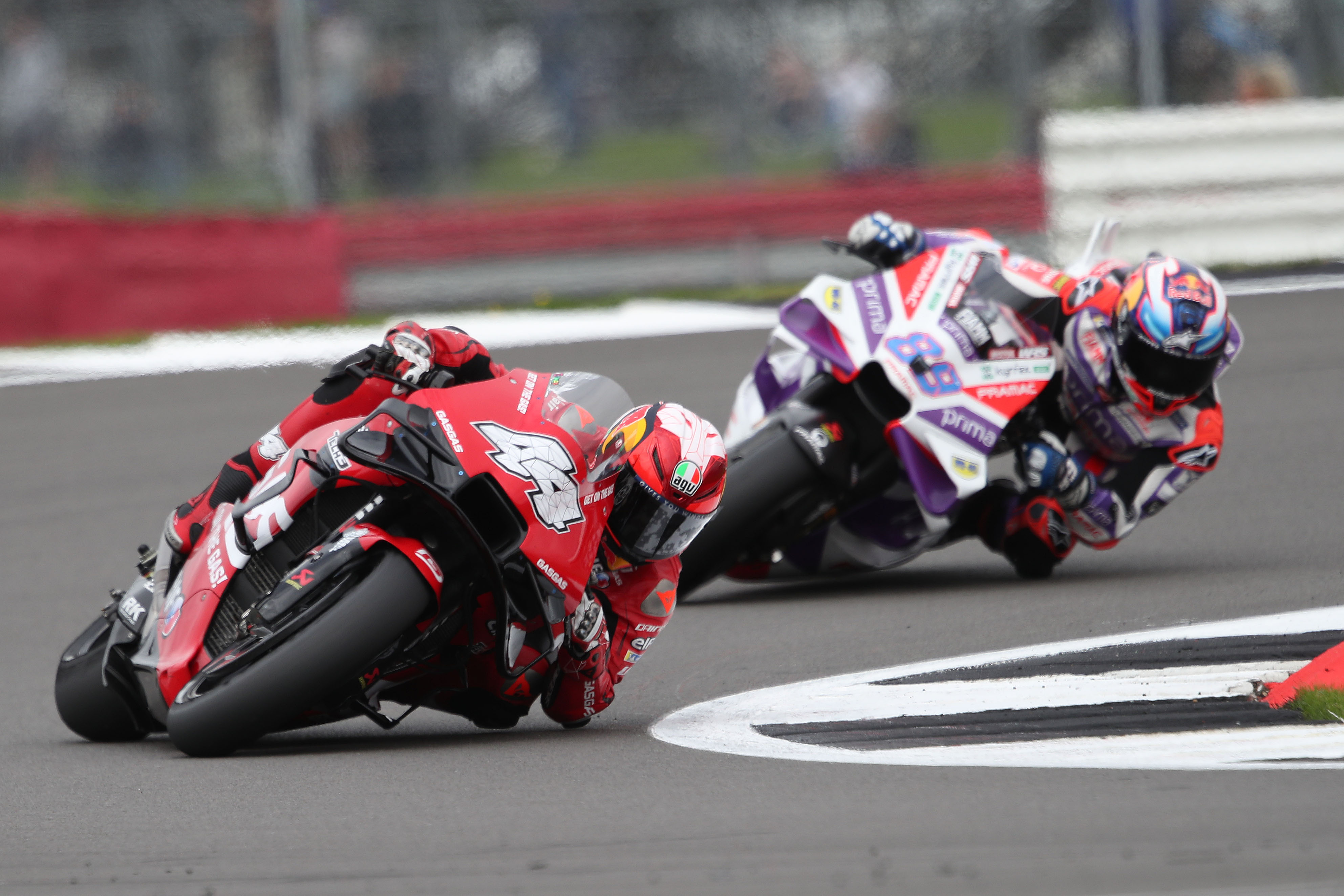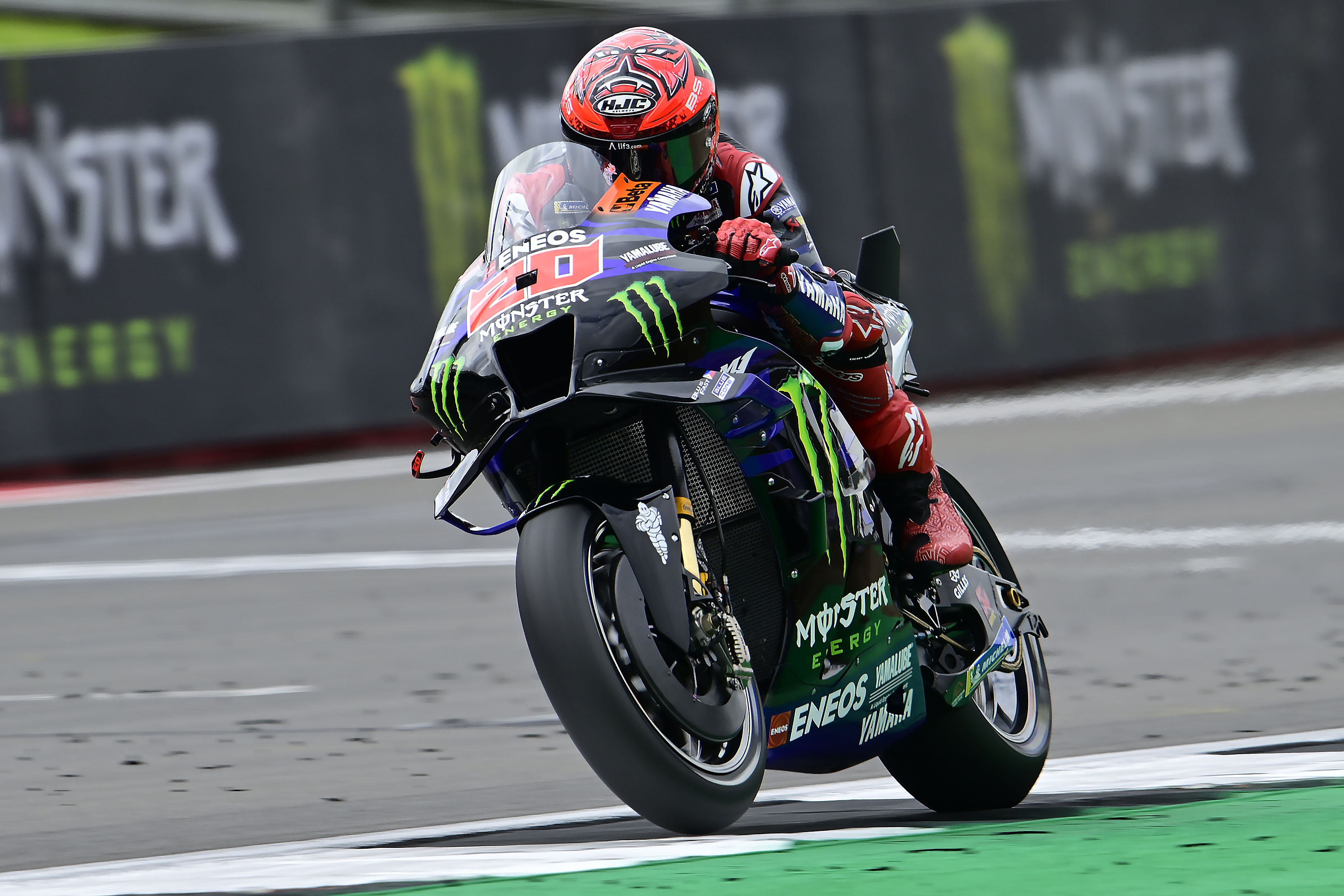MotoGP officials have clarified rules concerning the new tyre pressure monitoring system to The Race ahead of its implementation at the British Grand Prix this weekend, following confusion created by both the wording of MotoGP’s initial announcement and then comments from riders.
The system – and, subsequently, penalties for being outside the mandatory window – was initially set to be introduced at the second European round of the season back in May, but was delayed multiple times amid rider concern that being forced to run higher pressures would make things more dangerous rather than safer.
“When the pressure goes higher than the limit, [going] a bit higher is not a problem, but above that it starts to become very difficult to stop the bike,” said reigning world champion Pecco Bagnaia when asked by The Race about the system during Thursday’s press conference.
“If you want to go fast, you have to risk and you have to crash.
“If you are behind someone, you can clearly see it. My race in Jerez, I was close to the guys in front and I was letting them go for one or two laps to let the pressure go down then trying again to overtake. I was more or less always on the upper limit of the pressure. It won’t be easy.”

The announcement last week that the system would finally be introduced at Silverstone this weekend included the penalties attached to breaches of the rules – albeit these appear in a more watered down enforcement than originally planned.
“Following a request from the MotoGP technical director [Danny Aldridge], the FIM MotoGP stewards have confirmed that the system will now be enforced for both the sprint and the MotoGP grand prix race,” MotoGP wrote in its announcement.
“Technical infringements normally result in disqualification from the session or race, but as the system is new to the MotoGP class and it’s being brought in mid-season, the stewards have agreed a gradual penalty scale.”
That scale is as follows:
First offence: warning
Second offence: 3s penalty
Third offence: 6s penalty
Fourth offence: 12s penalty
Rather than rely solely on the electronic tyre pressure monitoring system (TPMS) now required to be fitted to every MotoGP bike to provide real-time data, it will also be manually collected from certain bikes post-race and then backed up with accuracy checks on the sensors, according to information communicated to The Race by MotoGP director of technology Corrado Cecchinelli in a statement.
“The TPMS is used to measure the pressure for penalties,” he confirmed. “The parc ferme check is a preliminary check that is done to confirm that the sensors are working fine on the same machines that will be checked then with the TPMS.
“It is done to avoid an argument like, ‘OK the TPMS reads below minimum, but it’s the sensor [that is] wrong’. So it is a two-stage scrutineering process on the same machine: first the sensors are checked at the parc ferme, and then, once confirmed OK, the TPMS race readings of the same machines are considered for penalties.”
However, this process will not be applied to every bike on the grid every time – instead, only certain riders picked at Aldridge’s discretion will be checked post-race as the MotoGP technical stewards are still in the process of building up the capacity to fully monitor the whole grid, more than three months after the full system was originally set to become active.
“First the technical director checks the sensors at the parc ferme on the selected bikes,” the Cecchinelli statement added, “to confirm the sensors work. Then, once done, he uses the TPMS race data to scrutineer the pressure on the same machines.

“It’s not that some machines are checked at the parc ferme, and others via the TPMS: it’s two steps on the same randomly selected machines. The TPMS is used only after the sensors are checked so there is no case that a rider may be penalised according to the TPMS, but his sensors turn out to be wrong, because the TD [technical director] checks them in the first instance.
“This is the technical director’s capability at the moment. We are working on the live application to all, so that only non-compliant riders will be checked, but [this is] not ready yet.”
That only a portion of the grid will be checked for tyre pressure compliance in the early going was something described as “not 100 percent fair” by Gresini Ducati’s Alex Marquez.





